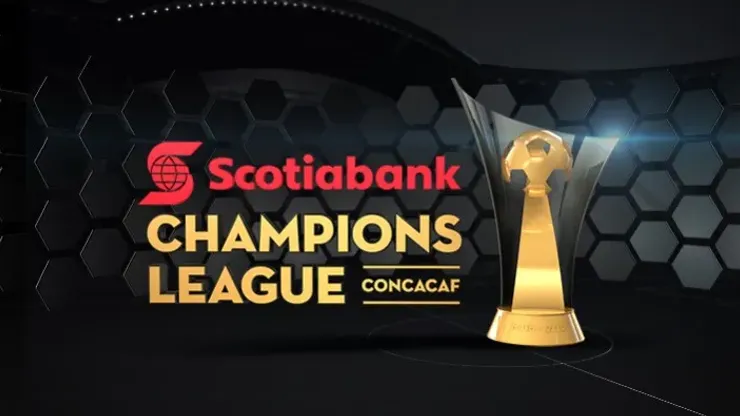MLS dreams of Champions League glory are about to go kablooey. Again.
Montreal remains alive in the ongoing CONCACAF Champions League quarterfinals, having played to a worthy draw at Pachuca earlier this week. A return leg against the Mexican club is set for next week.
But given the relative strength of the MLS clubs and based on 2014 performance, we all gave D.C. United a far better chance of stretching their run in the regional tournament. If, maybe if, Ben Olsen’s team could find enough scoring punch, they might have a shot at history as the first MLS team to claim ultimate glory and grab that coveted spot in this year’s FIFA Club World Cup. (Never mind that claiming that spot won’t be a game-changer in advancing the league’s national relevancy.)
But United gave up a five-spot in Thursday’s opening quarterfinal leg, unraveling rather spectacularly against clinical Costa Rican side Alajuelense, and now has a muy steep hill to climb in next week’s return leg at RFK Stadium.
Even if Montreal or D.C. United advances, they’ll face two more hazardous rounds en route to would-be glory. More Mexican teams await, and we know how that usually works out: MLS clubs are 2-32-7 on Mexican soil through the years in official competition. Taking a series against Mexican teams has almost always been a bridge too far – and that’s if the MLS can get by teams from Costa Rica or Central America.
So, following United’s defensive collapse Thursday, the usual round of reasons/excuses/complaints/“why can’t we?” are arriving as predictably as frigid air in winter.
There is always a tendency to over-think these things, but there is a simple truth at work here: MLS rosters still aren’t deep enough, top to bottom, with quality. Developing that quality just takes patience, something frequently in short supply when it comes to the teams we love.
The MLS teams with highly paid, highly experienced performers (DPs) can match quality for quality at the top of the roster. But once we get to spots Nos. 6-16, Mexican teams simply have better players. The difference between Costa Rican sides may not be as pronounced, but the field still tilts slightly their way: MLS teams are 3-5-2 since 2008 in Costa Rica.
That’s not awful. But throw in a couple more obstacles or difficulties, such as the less familiar artificial turf field at Alajuelense or the loss of a difference-maker (injured No. 1 Bill Hamid, the league’s reigning Goalkeeper of the Year) and odds for success for MLS sides begin tumbling quickly.
Let’s start here: all complaints about the timing of the tournament need some context, or maybe even an asterisk. Yes, it’s tough on D.C. United and Montreal, who are rusty from inactivity and far from top fitness in their first competitive matches in months. So, fair enough to put the “disadvantage” tag onto MLS sides in February. But! You only get to complain about that if you acknowledge that MLS sides enjoy roughly the same edge in group matches; early contests in CONCACAF group play take place in summer, as teams from Mexico and Central America are just getting into their seasons, while MLS clubs have been playing for months.
Past that: It’s not the coach. It’s not tactics. It’s not the calendar. It’s not the artificial turf.
The rosters simply aren’t good enough. And that’s no one’s fault in particular. We just aren’t there yet.
Peel back a couple more layers and this is clearly a case of wanting to have it all. And now!
These things take time. Yes, 20 years in, it would be nice to be getting closer. (Real Salt Lake’s loss in the 2011 final remains as close as any U.S. or Canadian team has come to a Champions League crown.) Heck, Sporting Kansas City, the New York Red Bulls and Portland Timbers didn’t even escape from group play last summer.
But I remind people all the time that MLS has come so far in such a relatively short time. And it will continue to get better.
In the meantime, we just cannot have it all. Not yet, anyway. The finances simply aren’t there to spend-spend-spend on all the things that will eventually create more comprehensive, overall success. For now, we cannot have a financially healthy league, exceptional stadiums that we all enjoy, indulgent marketing budgets to help spread the word and well-funded academies that will eventually reach and cultivate more talent … AND compete today with regional big spenders when it comes to stuffing rosters full of quality.
I suspect that in 10 years, things will look different. Just as it looks so very different today, with MLS about to reach its 20th opening day, than it did 10 years ago. Quality of rosters is night and day different than in 2005, believe it.
MLS rosters aren’t strong enough top to bottom. Let’s just hope that changes sooner rather than later.
Editor’s note: Steve Davis writes a weekly column for World Soccer Talk. He shares his thoughts and opinions on US and MLS soccer topics every Wednesday, as well as news reports throughout the week. You can follow Steve on Twitter at @stevedavis90. Plus, read Steve’s other columns on World Soccer Talk.
200+ Channels With Sports & News
- Starting price: $33/mo. for fubo Latino Package
- Watch Premier League, Women’s World Cup, Euro 2024 & Gold Cup
The New Home of MLS
- Price: $14.99/mo. for MLS Season Pass
- Watch every MLS game including playoffs & Leagues Cup
Many Sports & ESPN Originals
- Price: $10.99/mo. (or get ESPN+, Hulu & Disney+ for $14.99/mo.)
- Features Bundesliga, LaLiga, Championship, & FA Cup
2,000+ soccer games per year
- Price: $5.99/mo
- Features Champions League, Serie A, Europa League & Brasileirāo
175 Premier League Games & PL TV
- Starting price: $5.99/mo. for Peacock Premium
- Watch 175 exclusive EPL games per season







